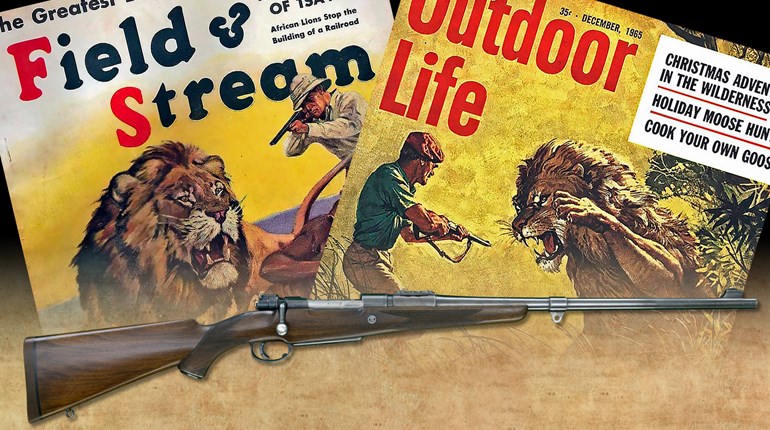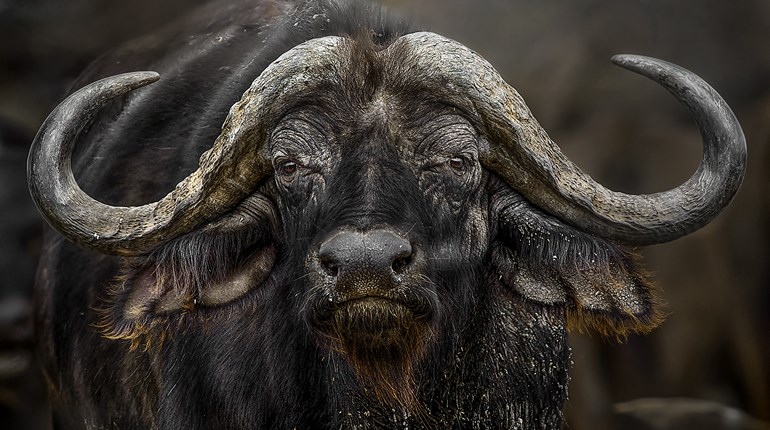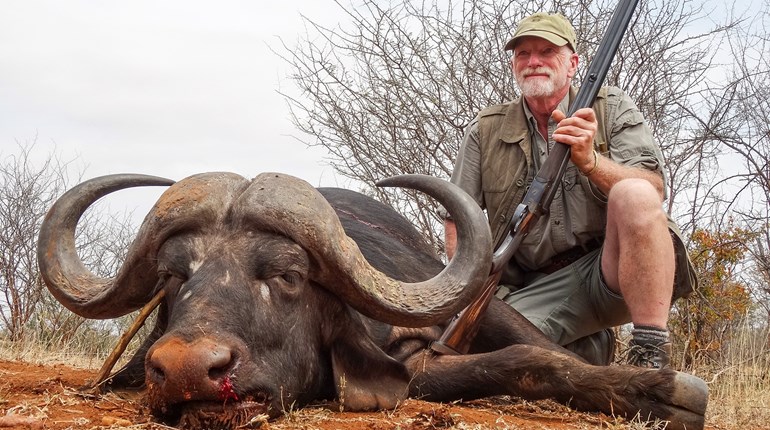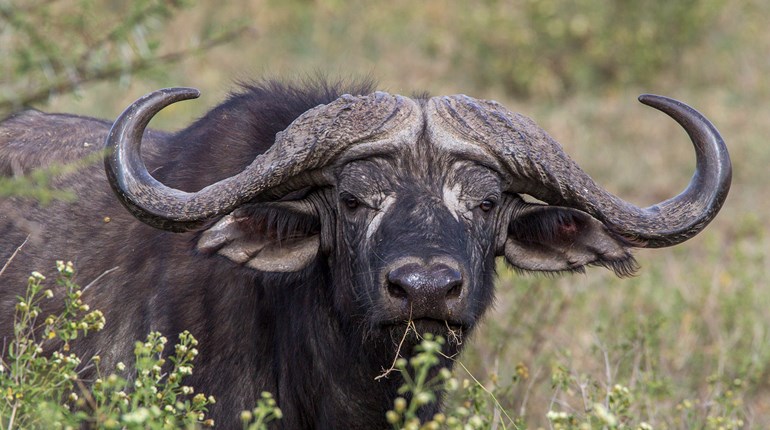
It’s got tremendous curving horns, up to a ton of weight to throw around and an attitude that prompted author Robert Ruark to say, “A buffalo looks at you like you owe him money.” The Cape buffalo, also known as the African buffalo, has achieved legendary status among safarigoers, outdoor writers and hunters. A member of the “Big Five” of African hunting (along with lions, leopards, elephants and rhinoceri), the Cape buff is considered one of the most dangerous game animals on the planet.
Why is this so? Well, although it’s actually related to the domestic cow (Cape buffalo are, indeed, members of the bovine family), the Cape buffalo has an attitude about on par with that of the wolverine...but it clocks in at about 20 times the wolverine's body weight. Cape buffalo are four times as strong as oxen; a single buff can tip over a Range Rover. As you can imagine, they have few natural predators. They’ll also “mob up” to fight off predators, even treeing lions the way your dog will tree a cat!
What’s more, the Cape buffalo is said to kill over 200 humans a year. That's pretty rare on its face--there are only a few species that actively seek to kill human beings--but it's even more interesting when we're talking about an animal that is ostensibly a herbivore. Other dangerous game like elephants may never forget, but Cape buffalo never forgive. They’ve been known to attack people who harmed them years after the event.
They are like the Holsteins you see at the farm in one way: Males are known as “bulls” and females as “cows,” while the young are “calves.” Males and females both have horns, although the males’ are thicker and join in the middle in a heavy structure known as the “boss.” Interestingly, the herds are matriarchal—meaning that a dominant female is in charge of the group.
It’s estimated that there are a million Cape buffalo spread throughout Africa, and sport hunting of the animal is part of what has kept its numbers so high. Trophy hunters pay big bucks to chase this beast, much of which goes towards conservation and preventing poaching.






































